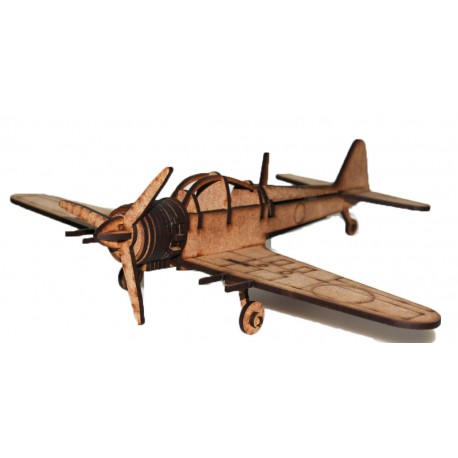No products
 View larger
View larger
Mitsubishi A6M Zero 3D Puzzle
Mitsubishi A6M Zero 3D Puzzle
New product
This Mitsubishi A6M Zero 3D Puzzle is recommended for children of 7 years and older.
No Glue is Required for assembly
Build Size :260x310x110mm (Length X With X Height)
Pieces : 44
Instructions for assembly can be found in the download section under "more" if required
20 Items
In Stock
More info
This Mitsubishi A6M Zero 3D Puzzle is recommended for children of 7 years and older.
Build Size :260x310x110mm (Length X With X Height)
Pieces : 44
No Glue is Required for assembly
The Basics
All the pieces of the puzzles slot into each other so the puzzle can be rebuilt as many times as you wish without glue. However, if you would like to display it on a shelf or in a cabinet we would recommend a bit of wood glue to keep it secure over a long period of time. The puzzles are made from wood so they can be painted with normal acrylic paint or spray paint.
The puzzles do not come with instructions. The reason behind this is because it is a puzzle… and the fun part is trying to figure out how all the pieces fit together as you would with a normal picture puzzle; so hours of fun can be had with the entire family joining in. But please do not fear as help is only an email away. Contact Xplore Designs via an email and we will gladly send you instructions to help you and assist in any way we can.
Some Interesting Information
The Mitsubishi A6M Zero was a long-range fighter aircraft operated by the Imperial Japanese Navy from 1940 to 1945. The A6M was designated as the Mitsubishi Navy Type 0 Carrier Fighter, and also designated as the Mitsubishi A6M Rei-sen and Mitsubishi Navy 12-shi Carrier Fighter. The A6M was usually referred to by its pilots as the "Zero-sen", zero being the last digit of the Imperial year 2600 (1940) when it entered service with the Imperial Navy. The official Allied reporting name was "Zeke", although the use of the name "Zero" was later commonly adopted by the Allies as well.
When it was introduced early in World War II, the Zero was considered the most capable carrier-based fighter in the world, combining excellent maneuverability and very long range. In early combat operations, the Zero gained a legendary reputation as a dogfighter, achieving the outstanding kill ratio of 12 to 1, but by mid-1942 a combination of new tactics and the introduction of better equipment enabled the Allied pilots to engage the Zero on more equal terms. The IJNAS also frequently used the type as a land-based fighter. By 1943, inherent design weaknesses and the failure to develop more powerful aircraft engines meant that the Zero became less effective against newer enemy fighters that possessed greater firepower, armor, and speed, and approached the Zero's maneuverability. Although the Mitsubishi A6M was outdated by 1944, it was never totally supplanted by the newer Japanese aircraft types. During the final years of the War in the Pacific, the Zero was used in kamikaze operations. In the course of the war, more Zeros were built than any other Japanese aircraft. (Wikipedia)

